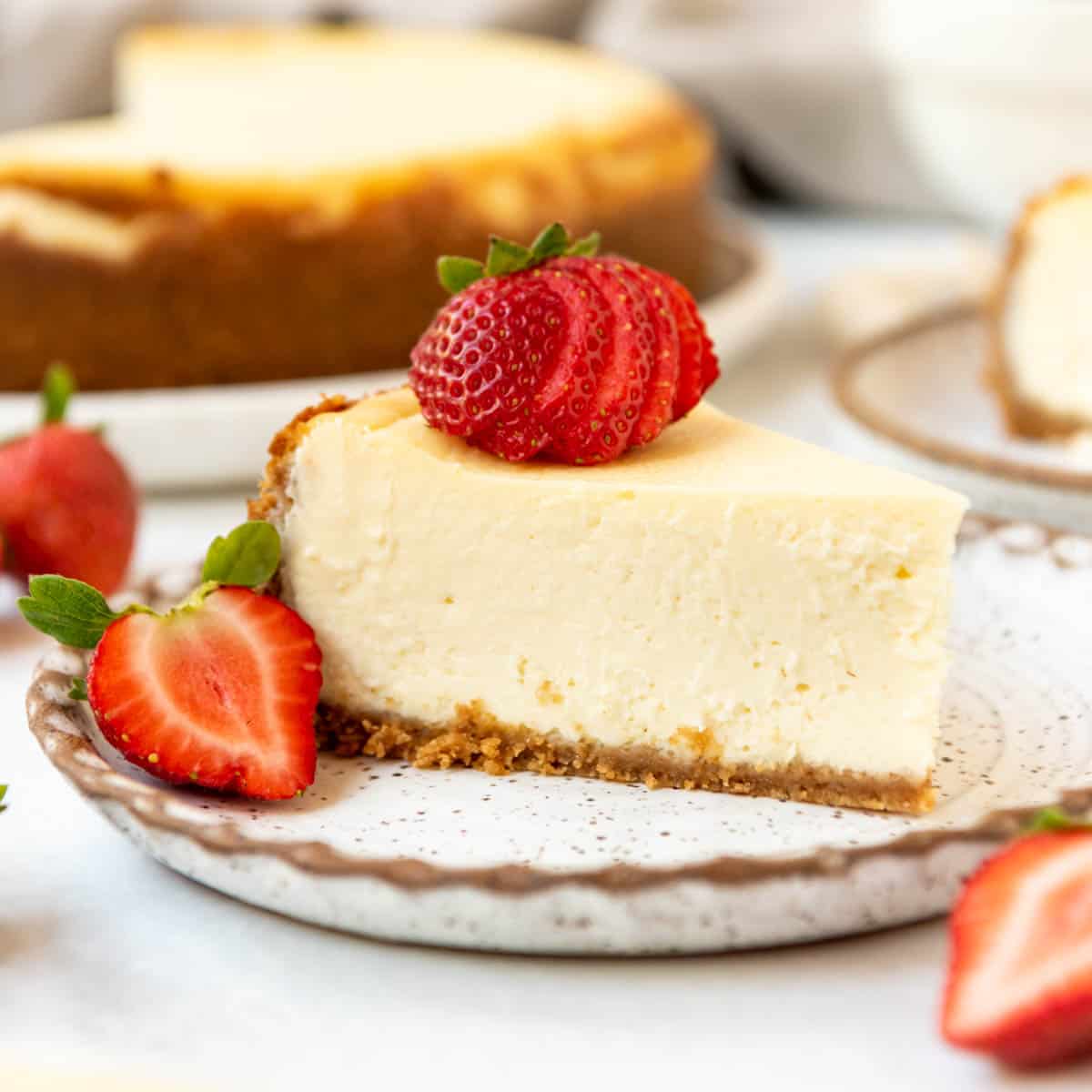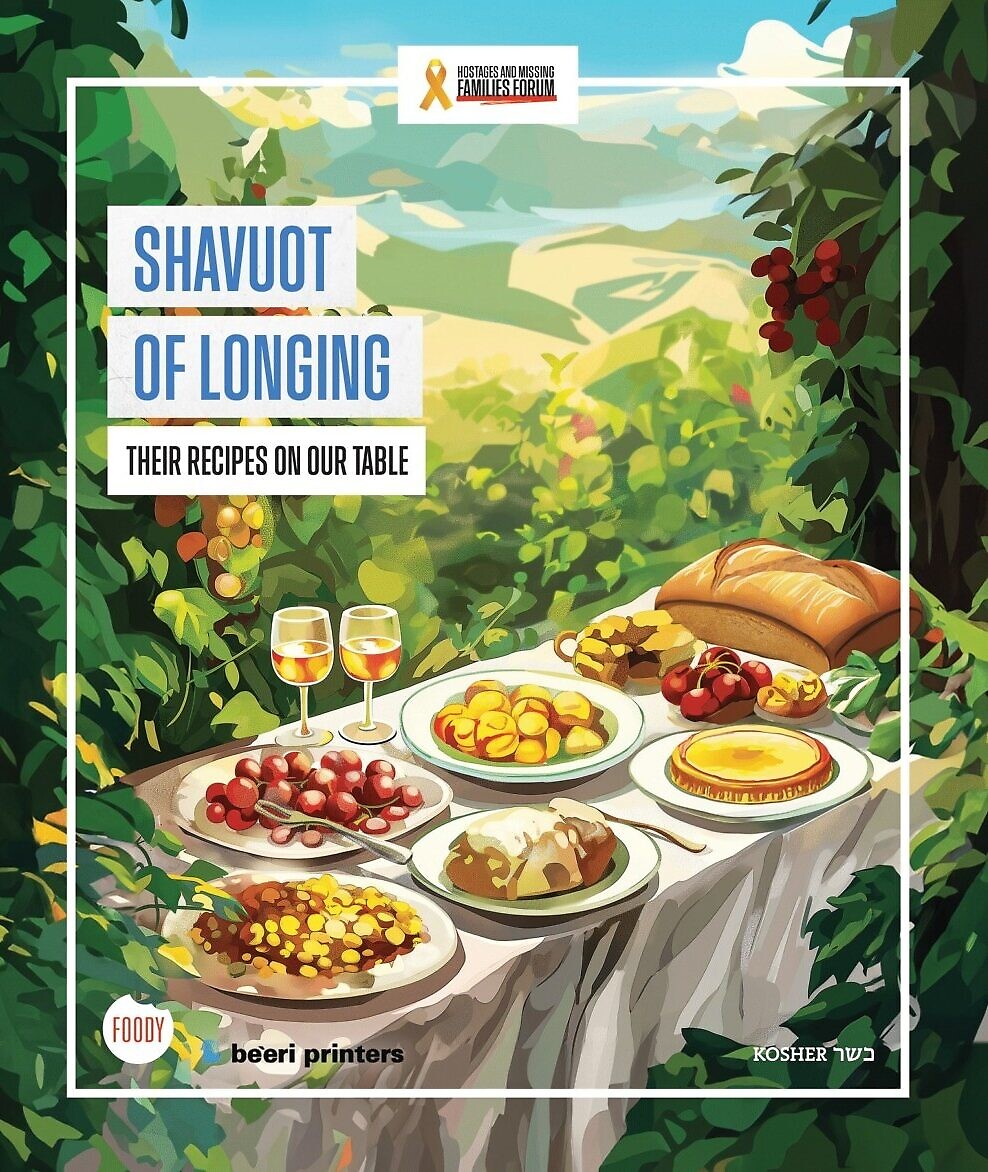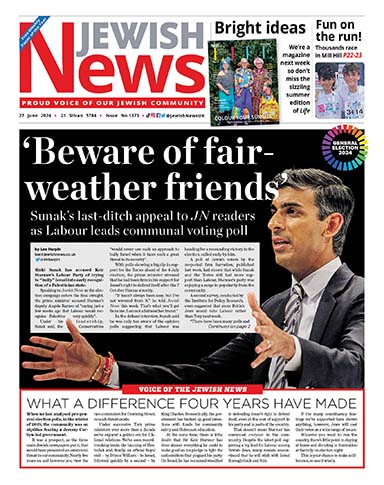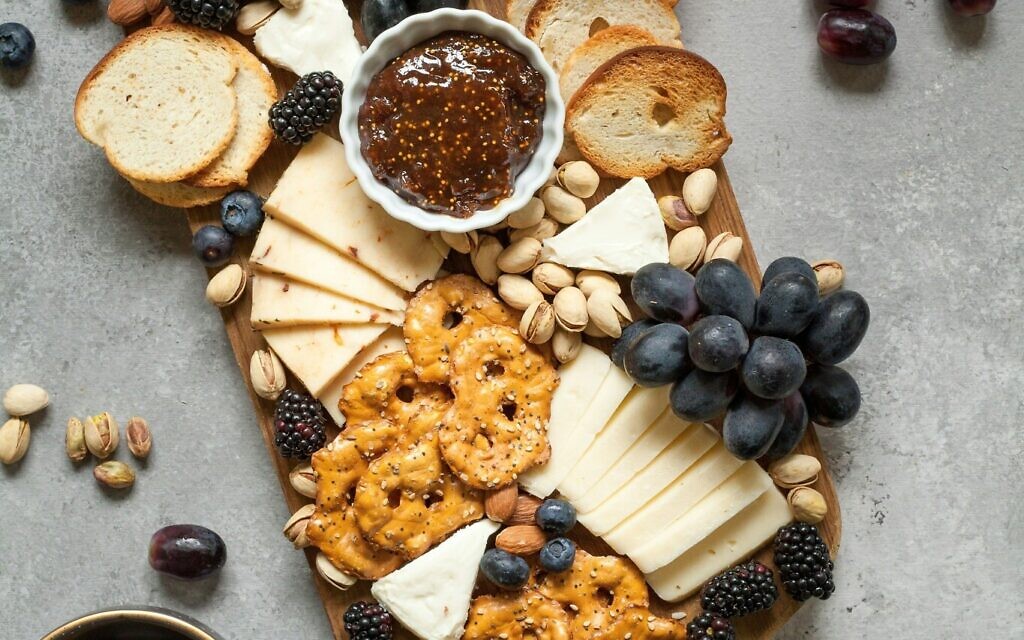Shavuot begs the question – what is it with Jews and cheese?
Plus a very special recipe book in support of the hostages
Despite the modern Israeli’s love of all things to do with cottage cheese, one does not automatically associate Jews with Camembert, Gorgonzola, Roquefort or Wensleydale. (The latter makes me think more of Wallace and Gromit.)
The relationship between Jews and cheese, though, is historical and ambivalent. It begins with the Bible when, in Genesis 18:8, Abraham prepares a meal for his three angelic visitors.(Although I did find a terrible pun online to the Tower of Babybel.)
We also see various other mentions in the Tanach, for example in 1 Samuel when the future King David’s father, Jesse, sends his sons ten cheeses to sustain them in their fight against the Philistine Goliath. Job 10:10 contains the line ‘You poured me out like milk, Congealed me like cheese’ — a line one might to expect more often in pop lyrics.
Get The Jewish News Daily Edition by email and never miss our top stories Free Sign Up
Such cheese was most likely produced from goat’s or sheep’s milk and preserved either by salting or by immersing it in olive oil. Cheese is still made this way in the Middle East today.
During the Hellenistic period, community leaders forbid Jews to buy cheese from their Greek neighbours. This might have been, in part, as a result of nationalism (an early form of Hebrew Brexit?) or worries that the cheese was curdled by rennet from a non-kosher animal. Such worries dog Jewish consumption of cheese to this day.
Probably the most famous story about Jews and cheese goes back to the sixth century BCE. A beautiful widow named Judith was said to have lived in the town of Bethulia in Israel when it was besieged by a foreign army. Judith met with its general, Holofernes. She fed him salty cheese, causing him to drink more and more wine to slake his thirst. When he passed out, drunk, she took his sword and decapitated him.
Cheese, though, has proved problematic for Jews, as the above point about rennet indicates. Even more so when one considers the prohibition of mixing meat and dairy ruling out the ubiquitous cheeseburger, or steak with garlic butter, among many other delicious dishes. (Although a 2018 Ha’aretz headline suggested that maybe Jews could eat cheeseburgers after all.)
Yet, culturally, cheese has begun to be associated with Jews in the United States in more recent times. So indelibly linked have bagels, a schmear of cream cheese and a slither of smoked salmon become, that it would be unthinkable to omit the cheese.
In the 1930s, Arnold Rueben, a German-Jewish restaurateur, he of the Reuben sandwich, substituted milk curd for cream cheese to make cheesecake. It soon caught on and became popular on Shavuot, the festival for dairy foods.
Of the many reasons for the popularity of Chinese food in the United States, it has been argued, is that it is considered to be ‘safe treyf’. This could refer to the fact that the non-kosher meat in Chinese food is often cut up so small that it doesn’t count but also that Chinese food tends not to contain dairy (read cheese), making its consumption not so offensive to Jews.
Strangely, given this history, however, there aren’t many Jewish cheese moments on film and television. But two stand out. In Seinfeld, after George had finished mourning the death of his former fiancée Susan, he recounts how he “was stripped to the waist, eating a block of cheese the size of a car battery.”
In Schitt’s Creek, when the Rose family attempts to make enchiladas, the recipe requires that they ‘fold in the cheese’, which leaves them completely flummoxed.

There aren’t any significant Jewish cheese film moments I can think of testifying to the ambivalent relationship between Jews and cheese. But try telling that to Jewish actress Alison Brie.
How did cheesecake become a Shavuot tradition?
The reasons for eating dairy on Shavuot are numerous, but most of them have little or no connection to the original holiday. The spring harvest festival coincided with an abundance of fresh dairy from animals that grazed on spring plants. The harvest was frequently celebrated with dairy, not only in Judaism, but also in many other cultures. There are many rabbinical explanations for why Jews celebrate Shavuot with dairy:
1. Before receiving the Torah, the Israelites did not have laws for kashrut, so when they returned to their camp from Mount Sinai, they prepared dairy foods, as it was the Sabbath and their pots were not kosher.
2. Har Gavnunim (Mountain of Many Peaks) is one of eight names for Mount Sinai, and it shares an etymological likeness to the word gvina, or cheese in Hebrew.
3.“Like honey and milk [the Torah] lies under your tongue” (Song of Songs 4:11). Rabbis argue that just as milk sustains the body, Torah sustains the spiritual being of a person
Cooking from the heart
The Hostage and Missing Families forum has developed a Shavuot cookbook that connects us through our hearts and our stomachs to the hostages being held captive in Gaza. Shavuot of Longing has 75 recipes loved by the hostages, from the pastry they start the morning with and the soup that warms them in winter, to the dessert that sweetens their souls. As a symbol of optimism for everyone’s return, Louis Herr, a devoted pizza lover, who was kidnapped and returned after 129 days in captivity, has dedicated a wish and a recipe filled with hope for everyone to come home. The book was made in collaboration with Be’eri Print in Kibbutz Be’eri.
Shavuot of Longing is available from jgive.com/new/en/gbp/donation-targets/126931/about, price £40. It is also available in digital copy. All proceeds will go to the Hostage and Missing Families Forum.

A version of this article appeared on jewthink.org

Thank you for helping to make Jewish News the leading source of news and opinion for the UK Jewish community. Today we're asking for your invaluable help to continue putting our community first in everything we do.
For as little as £5 a month you can help sustain the vital work we do in celebrating and standing up for Jewish life in Britain.
Jewish News holds our community together and keeps us connected. Like a synagogue, it’s where people turn to feel part of something bigger. It also proudly shows the rest of Britain the vibrancy and rich culture of modern Jewish life.
You can make a quick and easy one-off or monthly contribution of £5, £10, £20 or any other sum you’re comfortable with.
100% of your donation will help us continue celebrating our community, in all its dynamic diversity...
Engaging
Being a community platform means so much more than producing a newspaper and website. One of our proudest roles is media partnering with our invaluable charities to amplify the outstanding work they do to help us all.
Celebrating
There’s no shortage of oys in the world but Jewish News takes every opportunity to celebrate the joys too, through projects like Night of Heroes, 40 Under 40 and other compelling countdowns that make the community kvell with pride.
Pioneering
In the first collaboration between media outlets from different faiths, Jewish News worked with British Muslim TV and Church Times to produce a list of young activists leading the way on interfaith understanding.
Campaigning
Royal Mail issued a stamp honouring Holocaust hero Sir Nicholas Winton after a Jewish News campaign attracted more than 100,000 backers. Jewish Newsalso produces special editions of the paper highlighting pressing issues including mental health and Holocaust remembrance.
Easy access
In an age when news is readily accessible, Jewish News provides high-quality content free online and offline, removing any financial barriers to connecting people.
Voice of our community to wider society
The Jewish News team regularly appears on TV, radio and on the pages of the national press to comment on stories about the Jewish community. Easy access to the paper on the streets of London also means Jewish News provides an invaluable window into the community for the country at large.
We hope you agree all this is worth preserving.
-
By Brigit Grant
-
By Laurent Vaughan - Senior Associate (Bishop & Sewell Solicitors)
-
By Laurent Vaughan - Senior Associate (Bishop & Sewell Solicitors)
-
By Laurent Vaughan - Senior Associate (Bishop & Sewell Solicitors)
-
By Laurent Vaughan - Senior Associate (Bishop & Sewell Solicitors)






















